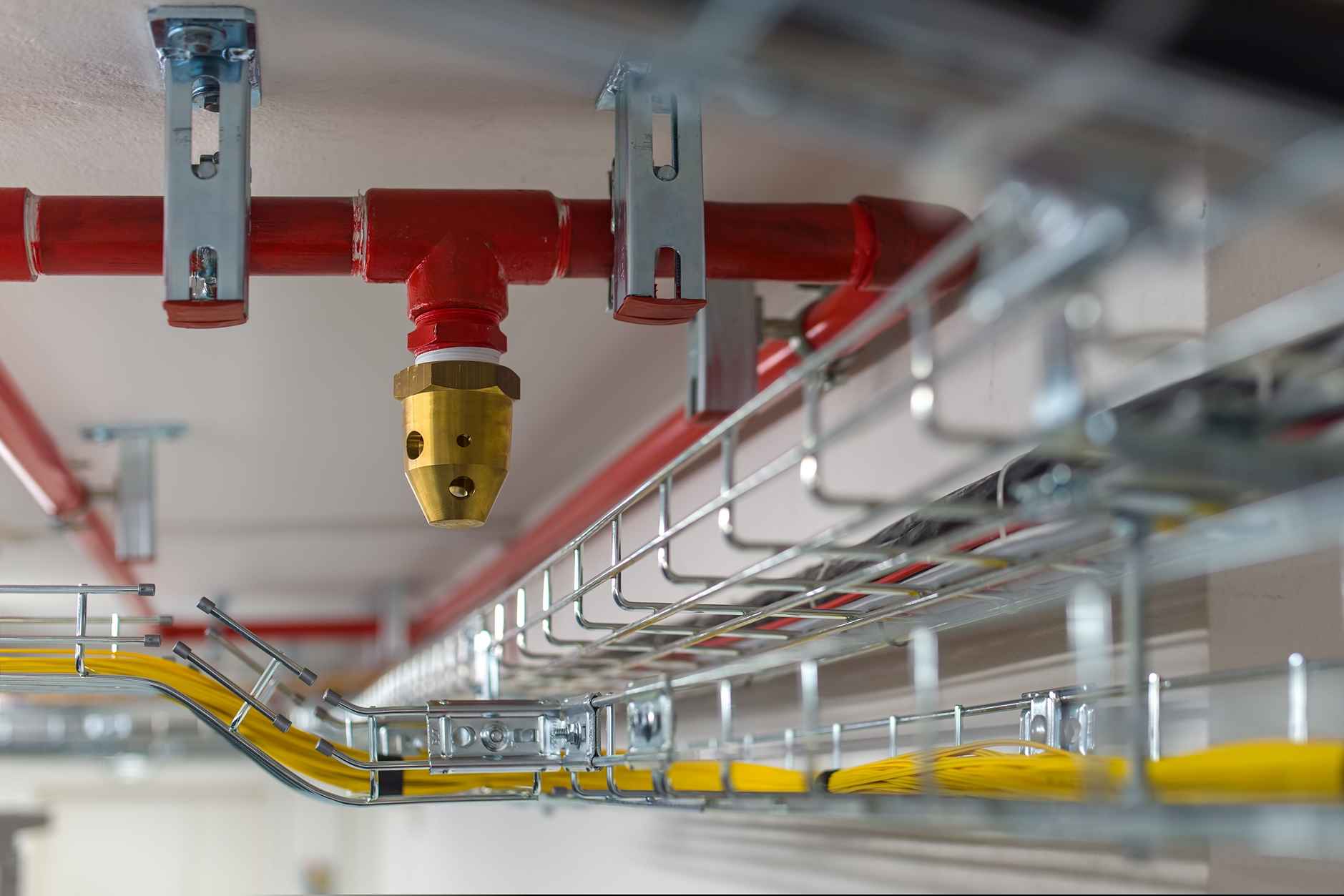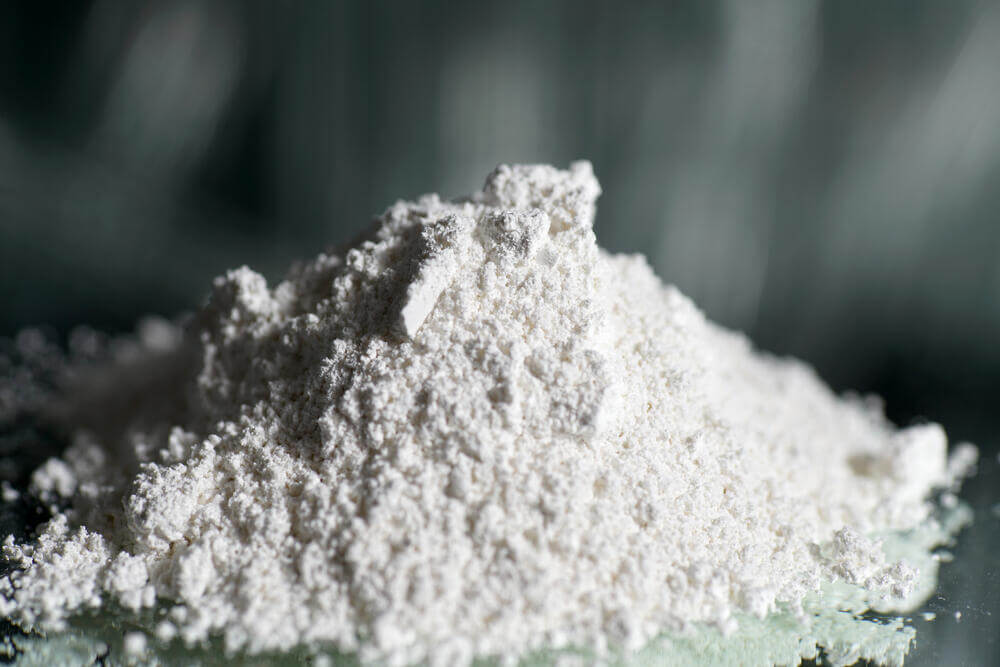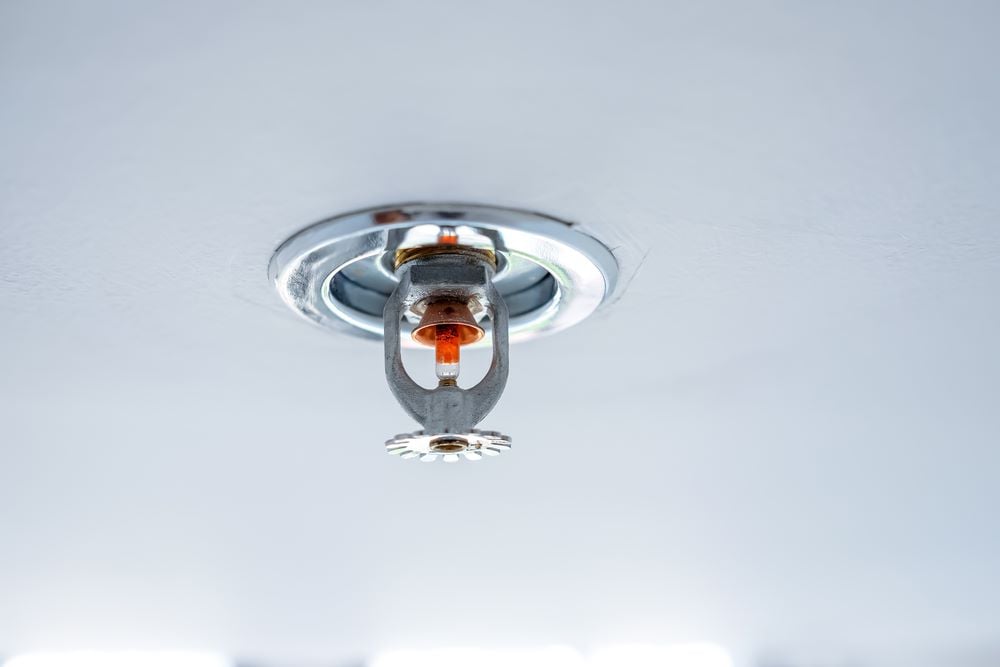Our clean agent fire suppression system design is designed to ensure optimal effectiveness in water-sensitive areas.
We identify & eliminate unnecessary energy consumption, leaving you with maximal functionality for the minimum annual energy cost.
All of our systems are designed with longevity in mind, saving you maintenance costs down the line.

For all your fire sprinkler systems, Nearby Engineers New York Engineers is a hub of professional engineers to provide you with excellent designs. We have been providing clean agent fire suppression system design for many years and our designs are revered in the industry.
When designing these systems, we assess and review your building design and perform necessary calculations on how to place these sprinklers.
We can provide you whichever variant of these compounds and even advise you if it is the right decision for your situation. All our designs have a top notch quality and are affordable.
We are one of the fastest growing MEP design firms in the construction industry. We pride ourselves on having a fast turnaround while providing cost effective solutions. We are licensed in 50 states and are your one stop shop for all MEP design needs.
We are licensed in all 50 states!
We design to the perfection
Enjoy our lightening fast turnaround
We have completed so far!
Our designs are approved by DOB in one go
The best service experience in the market
A clean agent is defined as the gaseous, volatile and electrically nonconductive fire suppressant that extinguishes the fire without leaving any residue after discharge. Now, a clean agent system is a system that uses clean agents to suppress fire in most water-sensitive and delicate areas that would or could be damaged by a water sprinkler discharge. Nearby Engineers New York Engineers provides this gaseous solution for residential or commercial buildings.
Clean agent system is a waterless solution to protect your assets from both fire and water. Imagine a room filled with archived files, medical equipment, data storage software, cultural assets, artifacts, computer servers, and books if it gets sprinkled with water during fire break out or, even worse, exposed to water due to a false alarm. That could be a disastrous loss of valuable assets.
Water sprinkler systems are not the only options nor are they the all-in-one solution for fire suppression needs. With our clean agent fire suppression system design, you can rest assured that the fire will be put down without leaving any damaging residue in the exposed area.
Most people when they think of gas they get concerned about the harmful effects on their lives and to the environment. Well, clean agent fire suppression media is not harmful to human lives and the environment. Since the beginning of these systems, there was one compound: halon, which is a monobrotrifluoromethane and it is known for its ozone-depleting properties. It has since been replaced by the 1994 Clean Air Act. In some countries, you may find others still using this forbidden compound. Nearby Engineers New York Engineers supplies clean agent fire suppression system design with no hazardous effects.
Like water sprinklers, we mount a clean fire suppression sprinkler system on the ceiling to discharge the gaseous substances when the need arises. Note that there are 3 variances of clean agents: Novec 1230, FM-200, and Inert gases (carbon dioxide, nitrogen, argon). We provide all these various compounds in our clean agent systems.
The efficacy of clean agent fire suppression system design lies in their composition. Novec 1230 and FM-200, in particular, are made of synthetic chemicals and therefore stored in liquid form but discharged in a gaseous form due to friction build up in the piping network. Inert gases refer to carbon dioxide, nitrogen, and argon, which have proven to be effective in getting rid of the oxygen and then suppress the fire.
Novec 1230 and FM-200 extinguish the fire by absorbing the heat whereas the inert gases extinguish it by reducing the oxygen below the content required for combustion. All these compounds are effective in suppressing blazing fires in water-sensitive units to save your delicate equipment.
We store these clean agents in cylinders so that they get dispensed through a piping system at specific concentrations. All these calculations are done by our engineers to ensure correct amounts because too much of gases could be detrimental even though they are declared clean. The word clean in the name signifies the harmless nature of these compounds to human lives and to the environment.
Our compounds are presented in concentrations sufficient to extinguish Class A, B and C fires in all apartments. Because they are nonconductive, they will not expose the occupants or firefighters to electric shock.
To be precise, FM-200 contains a formula of hydrofluorocarbon (HFC) which consists of carbon, fluorine, and hydrogen, whereas Novec contains fluorinated ketone which consists of carbon, oxygen, and fluorine. As already highlighted, the inert gases are made of argon, nitrogen and carbon dioxide. Do not be worried by the carbon dioxide content in here as it is a manageable and harmless concentration.
When installing these systems, we set a control panel and other notification devices and the smoke detectors. When the detectors detect fire, they notify the control panel which then sends signals to the notification devices to trigger the system.
We ensure full coverage in the unit in all corners. The inert gases are already stored in gas form and always under pressure. This clean agent is always ready to be in action. But, because inert gases are always compressed, you will never multiple containers than you would with the FM-200 and the Novec 1230.
The good side though: inert gases can be placed farther away from the area of the target due to the high pressure the gases are stored in.
Novec 1230 and FM-200 are stored as a liquid but get compressed and discharged as gases. You do not need as many containers as you would with the inert gases. When triggered, the powders will be discharged from meticulously fabricated nozzles to the fire. The agent operates in such a high pressure that they extinguish the fire within a few seconds than water sprinkler systems.
Water sprinkler systems are not an all-in-one solution for all applications. In some cases such as data storage centers, hospital file storage rooms, laboratories, and libraries, water damage can be catastrophic and so clean agent fire suppression system design emerge as the alternatives. We provide unmatched clean agent fire suppression system design.
This is probably the concern of every building owner as to whether the clean agents are safe for occupants and will not suffocate them. As we highlighted above, the clean agent system had included halon (monobrotrifluoromethane) in its composition until it was banned in 1994 under the Clean Air Act. It was found that this compound has adverse effects on the ozone and as thus was banished.
Apart from this excluded compound, there are no reported incidents of people suffering from the side effects of clean agents. All these compounds are declared safe.
The only downside is that the system leaves dust on the ceiling, but it is easy to clean the floor where it was discharged. Nonetheless, that dust is not a deal breaker.

While these methods are effective in suppressing the fire using what would be perceived as the same powder, they are notably different. A dry chemical dispenses dry chemicals to suppress the fire mostly industrial fires that have already developed. However, dry chemical extinguishing systems leave a messy floor that you need to clean up.
Nearby Engineers New York Engineers offers both of these systems but we would like to recommend the clean agent fire suppression system design for your office use. Leave dry chemicals to industrial applications, especially open spaces where gases would not do well at all because the pressure is inversely proportional to volume.
Clean agent systems offer a decent cleanup. Like dry chemical extinguishing systems, you need to refill them after discharge. Both systems, however, are not immune to false alarms, and in such cases, the dry chemical system would be more messy and hazardous in a closed office.
Wet pipe, dry pipe, deluxe or pre-action sprinkler system is common in many commercial and residential buildings. Even more to their popularity is that many standards enforce the use of water sprinkler systems as precautionary measures to fire emergencies.
If a clean agent is that efficient, why would standards promote the use of water-based solutions? We get such questions from many of our customers.
Well, to start with, water-based sprinkler systems are effective and their main purpose is the protection of the property and a delay of fire build up until everyone has evacuated the apartment. However, they were never designed for use in delicate and water-sensitive areas hence the need to have the clean agent fire suppressants.
Water is readily available and inexpensive to get it. Other reasons to prefer or consider water sprinklers could be attributed to water availability and affordability.
We install them differently but functionality is basically the same albeit in different conditions. So, for any generic protection against the possible fire, consider water-based solutions and for water-sensitive areas consider clean fire suppression agents.

Others do combine them in a building but we reckon you classify your water-sensitive units and only apply clean agents. Either way, clean agents often react quicker than sprinklers. The moment the smoke detectors detect the ire, the control panel will trigger the clean agent gases too extinguish the fire before it reaches a certain level of temperature that triggers water sprinklers. This is provided both systems are actuated by different detectors.
Besides being risky to have water sprinklers and clean agents in water-sensitive, it is just costly. New York Engineers strives to save you costs in all our designs. Provided the standards permit us, we will advise against such a combination. Clean agent systems are governed by NFPA 2001. Clean agents and water sprinklers do not receive the enforcement of the same standards.
Common Applications of Clean Agent Fire Suppression System Design
Clean agent suppressants are not as popular as water sprinklers mainly due to the fact that they do not receive the same attention from building codes. Nevertheless, businesses, especially those specializing with delicate equipment and other water-sensitive resources, have started making use of them thus replacing water sprinklers.
Applications below are some common areas suitable for clean fire suppression agents.
Our engineers are very helpful with guides, and so we can advise you about the installation of these systems in any other area not listed above.
As in the name, carbon dioxide suppression systems mainly use carbon dioxide in higher concentrations. This gas could be hazardous to human life. As thus, it needs not to be applied where there are human beings on a regular basis. Although clean agents, inert gases, in particular, contain carbon dioxide, it is in a manageable and harmless concentration.
To choose between Novec 1230, FM-200 and inert gases can boil down to personal preference. From the safety side, they are all safe with no known atrocities to the environment or human life.
However, there are certain factors that might influence your purchase. For instance, Novec 1230 and FM-200 are made of synthetic chemicals and are stored in liquid form but discharged as gases. The fact that they are stored in liquid form makes it reasonable to have a few cylinders than inert gases that are already compressed.
To maintain Novec 1230 and FM-200, you need to weigh the cylinders whereas with gases you have to check the pressure.
Because inert gases are already compressed, you will need a few more cylinders to cover the same area that is covered by their counterparts. If both systems are priced the same, one would opt for other options other than the inert gases.
382 NE 191st St , Suite 49674
Miami, Florida 33179276 5th Avenue, Suite 704 #904
New York, NY 10001